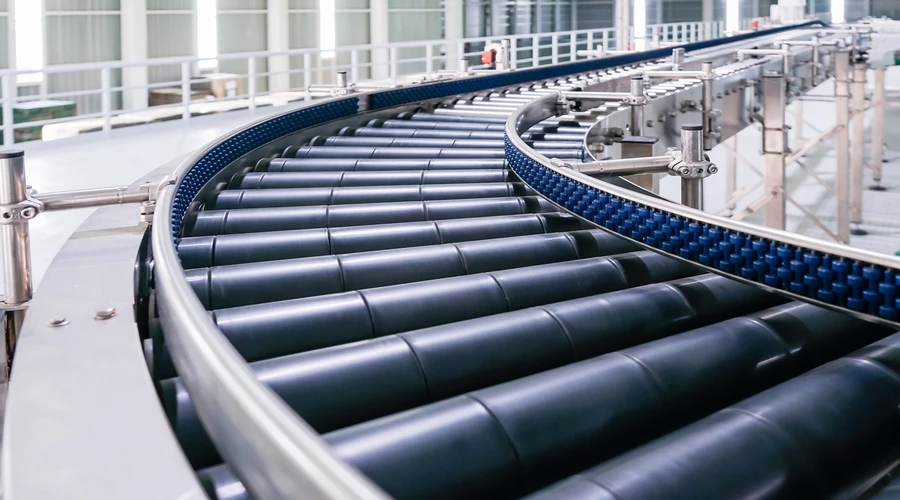
Conveyor systems are one of the solutions that can help a repository function on time and reduce risks. This is because they can speed up the transport of goods within the warehouse and reduce the risk of carrying heavy units. With the help of transportation systems, storage space can be more efficient and increase profitability.
What is a Conveyor System?
Conveyor systems are all-inclusive transport and transport to the nearest warehouse if required. These devices can be operated by hand, gravity, or engine. Conveyors can also help improve warehouse performance by planning transportation processes and reducing human error.
Benefits of Warehouse Conveyor Systems
There are many benefits to Conveyor systems for improved warehouse performance and listed below are some of them.
1. Quick Delivery
Warehouse conveyors are useful in large storage areas because they speed up the delivery of items everywhere. Compared to crews, powerful gravitational or engine convoys are faster in handling things in the universe.
2. Reduced Risks
Another reason why transportation systems are more efficient is that they reduce the risk of accidents. Workers who carry large loads are more likely to have accidents because of heavy loads. Conveyors reduce the risk because these items can be transported on stable foundations without the risk of the equipment experiencing fatigue.
3. Increased Productivity
As freight systems are heavier, this also improves productivity among workers. By eliminating strenuous tasks from human employees, they will have more power to handle other tasks.
What to Consider When Choosing Your Local Shipping System
1. Stock item
You should consider the details of your stock before purchasing any shipping plans. Be aware of how fragile your stock items are and check shipping systems that can carry soft units over time.
2. Warehouse Throughput
Warehouse throughput is the number of units that are processed and distributed throughout the universe. If your output is high or most stock items will be processed daily, you need a transmitter that can carry several units quickly. You should also check shipping systems that are efficient in handling a few items without compromising the integrity of each unit.
3. Long-Term Goals
Long-term goals should also be part of the process of selecting transport systems. Any company that wants to stay profitable in the long run would like to increase.
These are the types of Conveyor systems used today:
1. Belt Conveyor
A Belt conveyor is one of the most common means of transporting goods in the clothing industry. Contains a set of pulleys and belts on which the items to be transported are loaded. It is often used to transport objects of various sizes and stops.
2. Irola
A roller conveyor is a circular tube system in which stock items are stored. Items can be turned over automatically or manually. Finally, roller conveyors are usually placed at a higher angle so that the gravitational force helps to pull the stock down to a lower level.
3. Slat / Pinafore
The slat/apron conductors are slats chain-connected to each other and operated by a set of pulleys. Store transportation systems like these are useful for things that need to stand upright while on the go. Slat conveyors are commonly used in production plants and warehouses.
4. Ball transfer
Ball transfer vehicles are a group of rotating metal balls. These conveyors are often used to pack items or stocks that require more than one route.
5. High
An overhead conveyor is a single train system connected to the roof. This messenger is suitable if the warehouse has a limited floor area or a crowded storage area.
6. Pneumatic
This is a transportation system that uses air to transport objects from one place to another. Air conditioners are useful for transporting dry materials such as cement, flour, pellets, and sand.
7. Bucket
The bucket sender uses metal buckets to carry items that cannot be loaded on a flat surface. Usually, bucket holders are used to carrying sand, rocks, and liquids to other places.
8. Drive
The chute conveyor is the simplest and cheapest way of the transport system in the goods industry. It is a chute that tends to move objects from the top to the bottom using gravity. This type of conveyor is cheap and easy to use.
9. Magnetic
Magnetic magnet conductors are attached to vertical plates or any non-magnetic slide beds. They carry magnets, especially metal scraps. These conveyors are suitable for transporting metal objects that cannot be packed while on the road.
10. Standing
A direct conveyor is an elevator that transports stock items from one level to another. These warehouse conveyor systems are ideal for transporting goods up and down the site.
11. Wheel
This is a set of wheels attached to a metal frame, and objects are placed on top of it and folded by hand. Wheelchairs are inexpensive and easy to use. They are often used in reception and shipping areas.
12. Walking Beam
Warehouse transport systems such as these use stationary and moving foundations to transport the pieces in sequence. The moving beam is moving
Conclusion
Choosing Conveyor systems requires careful planning and careful consideration of the items in your warehouse and the needs of your customers. At 13 SQFT, we know how important it is to know the specific details of the items you will store in your area and the number of items on the way to each warehouse.
Using our proper transport systems will make life easier for your employees and make your work much easier. With a well-maintained warehouse, you can make an extra profit while keeping your employees safe.
POSTED BY
Team 13SQFT